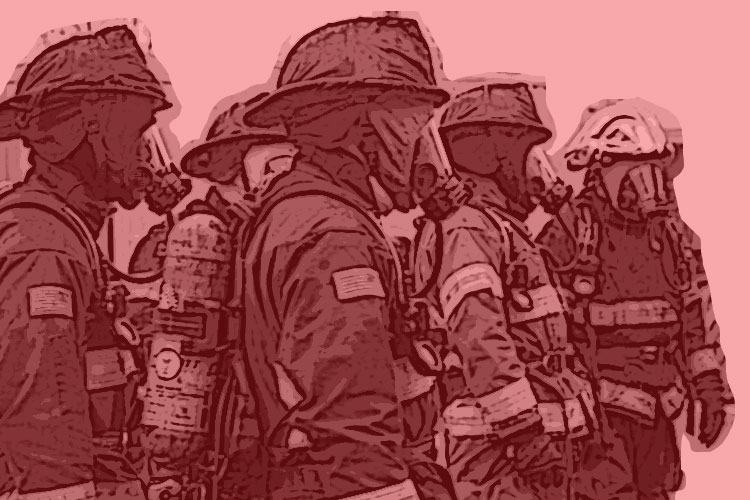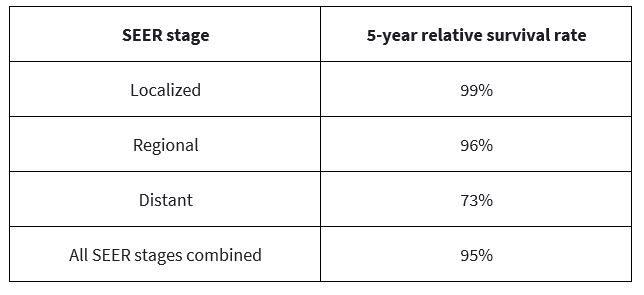
By Todd LeDuc
April is testicular cancer awareness month, so let’s take a moment review firefighter testicular cancer facts. Cancer that starts in the testicles is called testicular cancer. The testicles are made up of many types of cells, each of which can develop into one or more types of cancer. It’s important to know the type of cell the cancer started in and what kind of cancer it is, because they differ in both how they’re treated and their prognosis (outlook). Doctors can tell what type of testicular cancer you have by looking at the cells under a microscope. The average age at the time of diagnosis of testicular cancer is about 33. This is largely a disease of young and middle-aged men, but about 6% of cases occur in children and teens, and about 8% occur in men over the age of 55. Firefighters are at a 1.28 greater times increased risk of testicular cancer. Because testicular cancer usually can be treated successfully, a man’s lifetime risk of dying from this cancer is very low: about one in 5,000 (refer to www.niosh.gov and www.fcsn.net for more).
- What Every Firefighter’s Spouse Should Know About Cancer, Part 1
- Extinguishing Cancer in Firefighters
- Firefighters and the Cancer Beast
Most often, the first symptom of testicular cancer is a lump on the testicle or the testicle becomes swollen or larger. (Note that it’s normal for one testicle to be slightly larger than the other, and for one to hang lower than the other.) Some testicular tumors might cause pain, but most of the time they don’t. Men with testicular cancer can also have a feeling of heaviness or aching in the lower belly (abdomen) or scrotum. There may also be breast growth or soreness (rare). Even if testicular cancer has spread to other parts of the body, many men might not have symptoms right away. Some men might have some of the following: Low back pain, from cancer spread to the lymph nodes (beansized collections of immune cells) in back of the belly; shortness of breath, chest pain, or a cough (even coughing up blood) may develop from cancer spread in the lungs; belly pain, either from enlarged lymph nodes or because the cancer has spread to the liver; headaches or confusion, from cancer spread in the brain. Some men with testicular cancer have no symptoms at all, and their cancer is found during medical testing for other conditions.
The importance of decontamination, including showering after carcinogenic smoke and fire exposure, cannot be overstated as a key component of prevention. Take a moment to review five-year survival rates based on the SEER database, which tracks five-year relative survival rates for testicular cancer in the United States, based on how far the cancer has spread. The SEER database, however, does not group cancers by AJCC TNM stages (stage 1, stage 2, stage 3, etc.). Instead, it groups cancers into localized, regional, and distant stages:
- Localized: There is no sign that the cancer has spread outside of the testicles.
- Regional: The cancer has spread outside the testicle to nearby structures or lymph nodes.
- Distant: The cancer has spread to distant parts of the body, such as the lung, liver, or distant lymph nodes.

With survival rates being so high with localization to the testicles, it is essential for personal detection via self-exam combined. In addition, annual occupational firefighters’ physicals are a key component to ensuring medical screening and early identification of abnormality and testicular cancer. Sadly, the recently released NFPA 5th National Needs Assessment from December 2021 showed much work still to be done when it comes to expanding access to occupationally appropriate physicals for all fire departments and firefighters. Life Scan Wellness has enhanced the traditional physical, incorporating ultrasound imaging as part of enhanced screening for testicular cancers, with tremendous results.
Being proactive with your annual NFPA 1582 physical is an essential component of cancer survival.

Todd LeDuc, MS, CFO, FIFirE retired as the executive assistant chief of Broward County, Florida, and joined Life Scan Wellness Centers as their Chief Strategy Officer. He is a reviewer or both professional credentialing and agency accreditation with the Center for Public Safety Excellence and advisory board member of the First Responder Center of Excellence. He is a longtime board member of the International Association of Fire Chief’s Safety, Health & Survival Section and a technical committee member of the NFPA Standard on Occupational Health of First Responders. He is also the editor of the Fire Engineering book, Surviving the Fire Service. He can be contacted at Todd.LeDuc@lifescanwellness.com.
MORE
Fire Service Repetitive Head Trauma and Associated Implications

